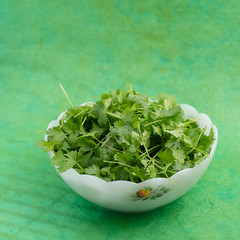
- More Detail Here:
- Fat Analysis
Submitted by: John Darton
It is perfectly normal to obtain one or two tender, well-formed feces that is very easily to exude, bowel motions each day, with no energy of pushing way too hard. It’s not typical to miss moving ones bowel every day.
A person is constipated if the feces is dried up and hard, encounters difficulty and pushing on passing out feces and had unpredictable bowel motions.
One of the several elements influencing bowel motions is soluble fiber consumption. If there’s sufficient dietary fiber in the diet, the dietary fiber combines and provides mass to the feces.
Every small particle of the dietary fiber takes up obtainable fluid and grows into a minute gel bead. These very small particles give the feces size, shape and moisture content, which can make it easy for the colon to maneuver along and discharge the feces.
To attain healthy and balanced bowel motion, enough water must also be determined. There should be sufficient water for consumption and sufficient lubrication on the lining of the colon.
With reduced dietary fiber within the diet plan, constipation is likely to take place. Dietary fiber may be soluble and insoluble. Soluble fiber melts in water and develops a gel-like material that decelerates digestion.
It can help hold off the draining of the stomach and tends to make one sense to be full that at some point regulates rise in weight. Insoluble fiber, in contrast, is regarded as gut-healthy roughage because of its laxative effect. It provides a bulk to the diet. Therefore, blocking constipation.
This fiber doesn’t break up in water, but it has a tendency to go through the digestive tract to accelerate the passage of food and waste materials through the bowel. Inadequate fiber in the diet regime certainly leads to constipation.
Minimal fiber diet also takes on a significant part in constipation, particularly among the aging adults. Older adults frequently lack fascination with eating and have a tendency to pick junk foods that are reduced fiber.
Some elements, such as lack of teeth could also push older people to consume much softer foods that happen to be highly processed and lacking in dietary fiber.
A nutritional program needs to include sufficient fiber, amounting to 20 to 35 grams daily. This quantity can assist to develop soft, bulky feces. A physician or dietitian is capable of doing great assistance in preparing a suitable high-fiber diet.
It is advisable to seek advice from them for well-balanced food. Foods that are full of fiber consist of whole grains, bran cereals, beans, fresh vegetables and fruits, such as broccoli, asparagus, apple, Brussels sprouts, cabbage, carrots, grapes and prunes.
If someone has already been struggling with constipation, he should restrict on the consumption of highly processed foods and dairy foods such as milk, cheese and ice cream.
These food types comprise high-fat but minimal fiber. These are the basic top twenty foods that are known in high dietary fiber content.
1. Bran cereals
2. Dried beans, legumes and peas
3. Fresh and frozen green peas
4. Dried figs, apricot and dates
5. Raspberries, blackberries and strawberries
6. Fresh of frozen lima beans
7. Sweet corn
8. Whole wheat and whole-grain cereal products
9. Broccoli
10. Bananas
11. Coconut
12. Brussels sprouts
13. Cherries
14. Baked potato with skin
15. Green snap beans, pole beans and broad beans
16. Plums, pears and apples
17. Prunes and raisins
18. Spinach, kale, and turnip greens
19. Nuts, including peanuts and walnuts
20. Carrots
These food types could be merged in a diet plan to guarantee ample intake of fiber. Sufficient dietary fiber in the diet plan minimizes the chance of experiencing constipation.
About the Author: And finally, if you are interested in more natural remedies for constipation, please check out our
Natural Remedies For Constipation
site
Source:
isnare.com
Permanent Link:
isnare.com/?aid=944917&ca=Medicines+and+Remedies}